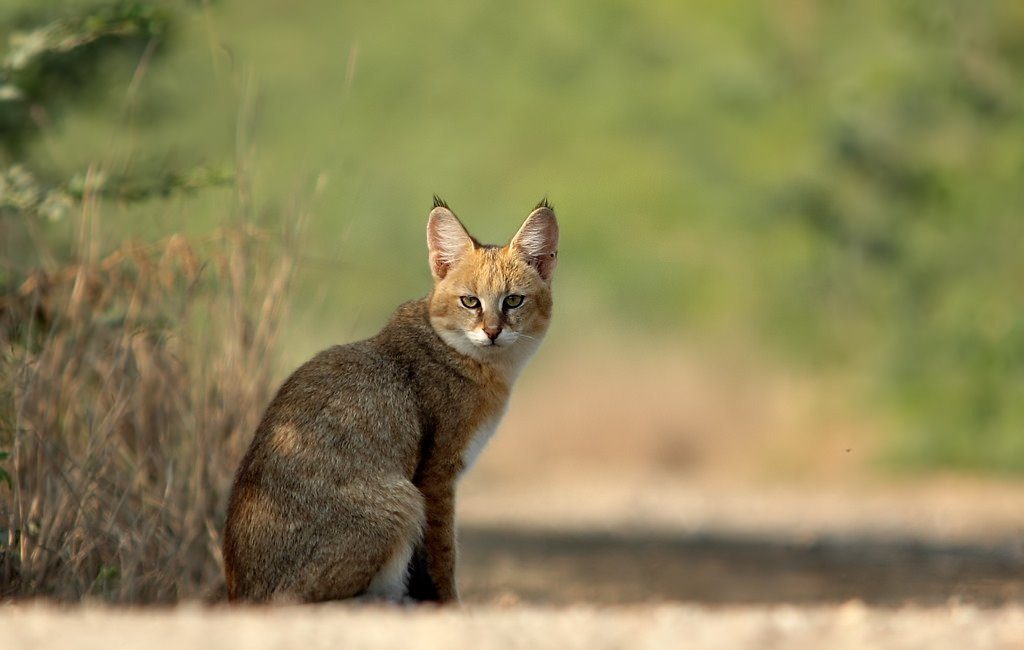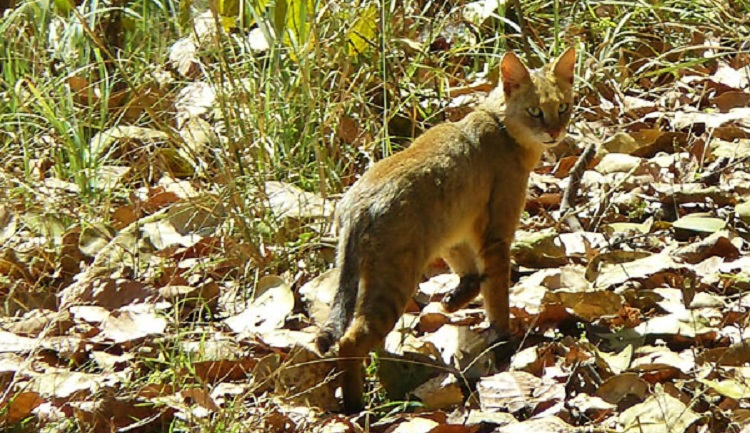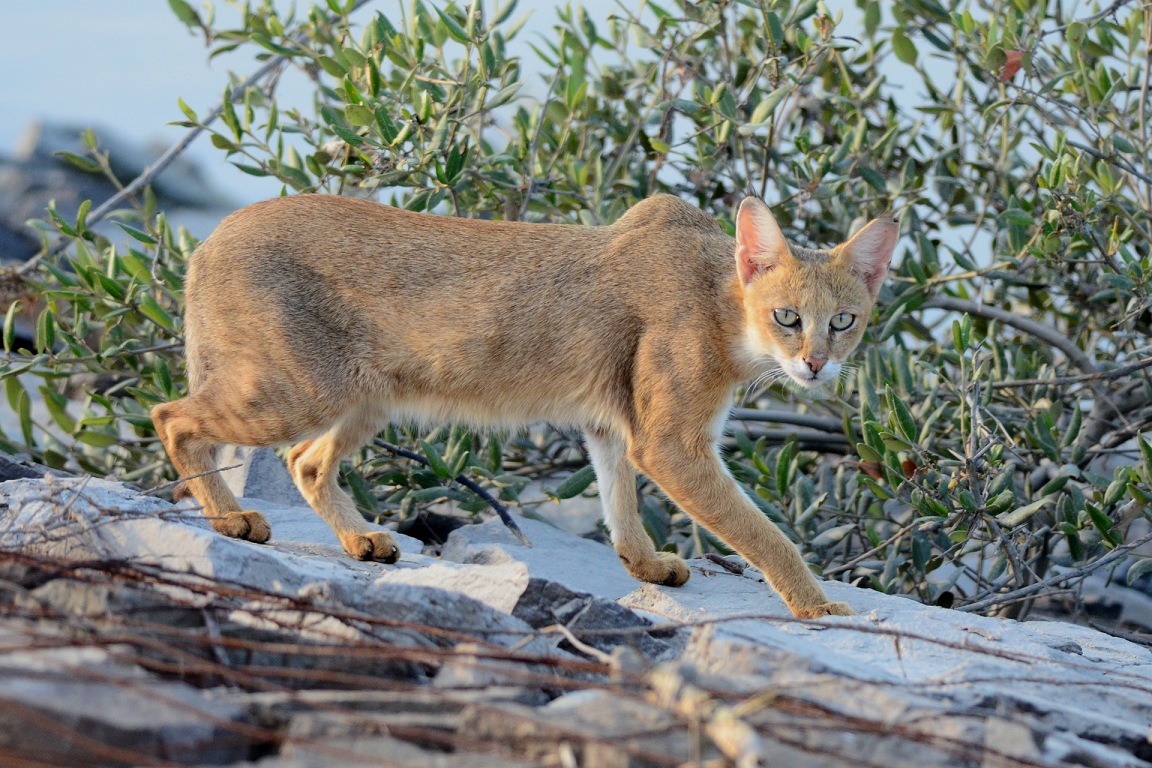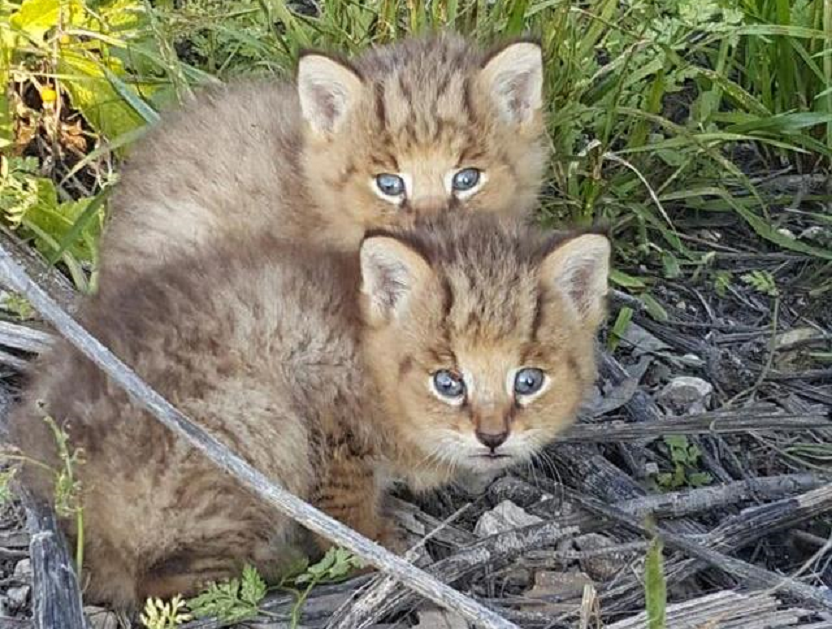
Jungle Cat: A Comprehensive Guide
The jungle cat (Felis chaus), also known as the swamp cat or reed cat, is a medium-sized wild feline native to parts of Asia and Africa. Despite its name, the jungle cat is not primarily associated with dense forests but thrives in wetlands, grasslands, and agricultural landscapes.
This species is known for its adaptability to various environments, making it one of the most widespread small wild cats in its range.
Physical Characteristics

The jungle cat is larger than a domestic cat but maintains a slender build. Its coat ranges from sandy brown to tawny grey, with lighter underparts. Unique features include:
- Long legs: Ideal for stalking prey.
- Pointed ears: Tipped with small black tufts.
- Short tail: Marked with dark rings and a black tip.
- Bright yellow eyes: With elliptical pupils for sharp vision.
Melanistic (black) individuals have been observed in regions like Pakistan and India.
Habitat and Distribution
The jungle cat has a broad geographic range spanning the Middle East, South Asia, and Southeast Asia. It is commonly found in:
- Wetlands: Swamps, reed beds, and riverine areas.
- Grasslands: Open plains with dense vegetation.
- Agricultural zones: Sugarcane plantations and man-made wetlands.
This adaptable species can thrive at elevations up to 2,400 meters in the Himalayas but prefers lowland areas with abundant water sources.
Behavior and Diet

The jungle cat is primarily diurnal, hunting during early mornings and late afternoons. It is a solitary animal that marks its territory using scent marking and urine spraying. Key aspects of its behavior include:
- Carnivorous diet: Preys on rodents, birds, reptiles, amphibians, and fish.
- Swimming skills: Known to dive into water to catch fish.
- Adaptability: Can scavenge kills from larger predators when necessary.
Interestingly, jungle cats are also known to consume fruits during winter months, showcasing their omnivorous tendencies.
Reproduction and Lifespan

Mating seasons vary geographically, with females giving birth to 1-6 kittens after a gestation period of 63-68 days. Kittens are born with black stripes that fade as they mature. They become independent by 8-9 months and reach sexual maturity between 11-18 months.
The average lifespan of a jungle cat is 12-14 years in the wild and up to 20 years in captivity.
Conservation Status
The jungle cat is classified as «Least Concern» by the IUCN Red List. However, its population is declining due to threats such as:
- Habitat loss: Destruction of wetlands and agricultural expansion.
- Human conflict: Retaliatory killings by farmers protecting poultry.
- Illegal trade: Poaching for fur and other body parts.
Conservation efforts focus on protecting wetland habitats and raising awareness about the ecological importance of this species.

Why Protect the Jungle Cat?
The jungle cat plays a vital role in controlling rodent populations and maintaining ecological balance. By safeguarding this species, we contribute to the health of diverse ecosystems across its range.
